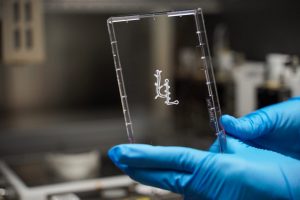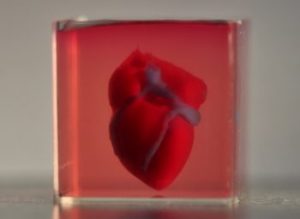3D printing had been a recently flourished technology that was introduced to the world during late 1980. Printing real world objects by using a digital object file with the aid material ink had been the basic underlying principle in 3D printing technology. Taken by its simple ideology scientists around the world showed keen interest on this particular technology and tried to broaden its horizons through further research. 3D bioprinting is one such newly discovered avenue that rapidly reaching towards greater inventions.
3D printing – https://fos.cmb.ac.lk/blog/3d-printing-magic-created-science/
What is Bioprinting?

Bioprinting is an extension of traditional 3D printing. It produces cellular materials such as bones, blood vessels, tissues etc. inside a confined space where cell function and viability are preserved. These structures are created in layer-by-layer manner by using the material known as bio-ink. Scientists believe these constructed tissues have the potential to be a promising solution in medical and tissue engineering fields to correct or even replace the damage tissues.
Ink to print living tissues?
Bio-ink is a solution of a biomaterial or a mixture of several biomaterials in the hydrogel form which have the ability of expressing the essential features of desired cell types. An ideal bio-ink should possess proper mechanical, rheological and biological properties of the tissue of interest to ensure the correct functionality of bio-printed organ or tissue. Bio-ink may be made from natural or synthetic bio-materials alone, or a combination of the two as hybrid materials.
According to Professor Shulamit Levenberg head of the Technion-Israel Institute of Technology the new printer in Technion is able to obtain the information from a patient’s CT scans and translate it into printing three-dimensional tissue that exactly suits an injured area. The printer has different printing heads with different features such as temperature or UV light. The bio-ink can be polymerized by the change of temperature, UV light or by mixing different components to generate the final shape and structure of the desired organ.
Where bioprinting is leading us?

With regard to the bioprinting the most pressing question is will it provide a successful solution to print biological organs for medical transplants in the future? For that question scientists answer as it is just an approach up to now that promising to have greater potential in the future. According to Technion scientist creation of functional organs will be more complex venture. Printing a tissue itself is a challenge to organize the mixture of different cell types in the correct orientation, function and differentiation. Identifying the correct bio-ink is a crucial step for the success of the whole printing process. A team led by professor Levenberg were able to restore the walking ability and mobility of paralyzed rats by using engineered 3D construct of human stem cells. Outcomes of this research give hope to many that seek restoration of damaged tissues.
The most recent discovery in bioprinting; creating a small scale 3D printed human heart inside an enclosure was an exhilarating response to many who await in the long recipient list for organ transplants. According to professor Dvir of Tel Aviv University in Israel this is the first time in the world where an entirely complete heart was printed by using a patient’s bio material. Furthermore he explain that one of the main cause in failed organ transplants is the rejection of the organ or tissue from the recipient’s immune system. Under this technology the bio-ink will be extracted from desired patient and personalized organs can be produced with the aid of their own bio material. This application can avoid the rejection of transplanted tissues and organs.
Eventhough we expect this scientific breakthrough to set a new dawn in clinical medicine, printing actual sized human heart is yet a challenge with all the cells and blood vessels due to the limiting resolution powers of current 3D printers. But professor Dvir explain that 3D printing technology itself is growing fast seeking new technical advancements. So within the next decade 3D bio printers may be available in the finest hospitals to conduct these procedures routinely.

Reference – Story and Image Credits
https://www.researchgate.net/publication/323481574_Bioinks_for_3D_bioprinting_An_overview
http://nocamels.com/2019/04/technion-3d-printing-center-living-cells/
http://nocamels.com/2019/04/israeli-scientists-3d-print-a-tiny-live-heart-made-with-human-tissue/

